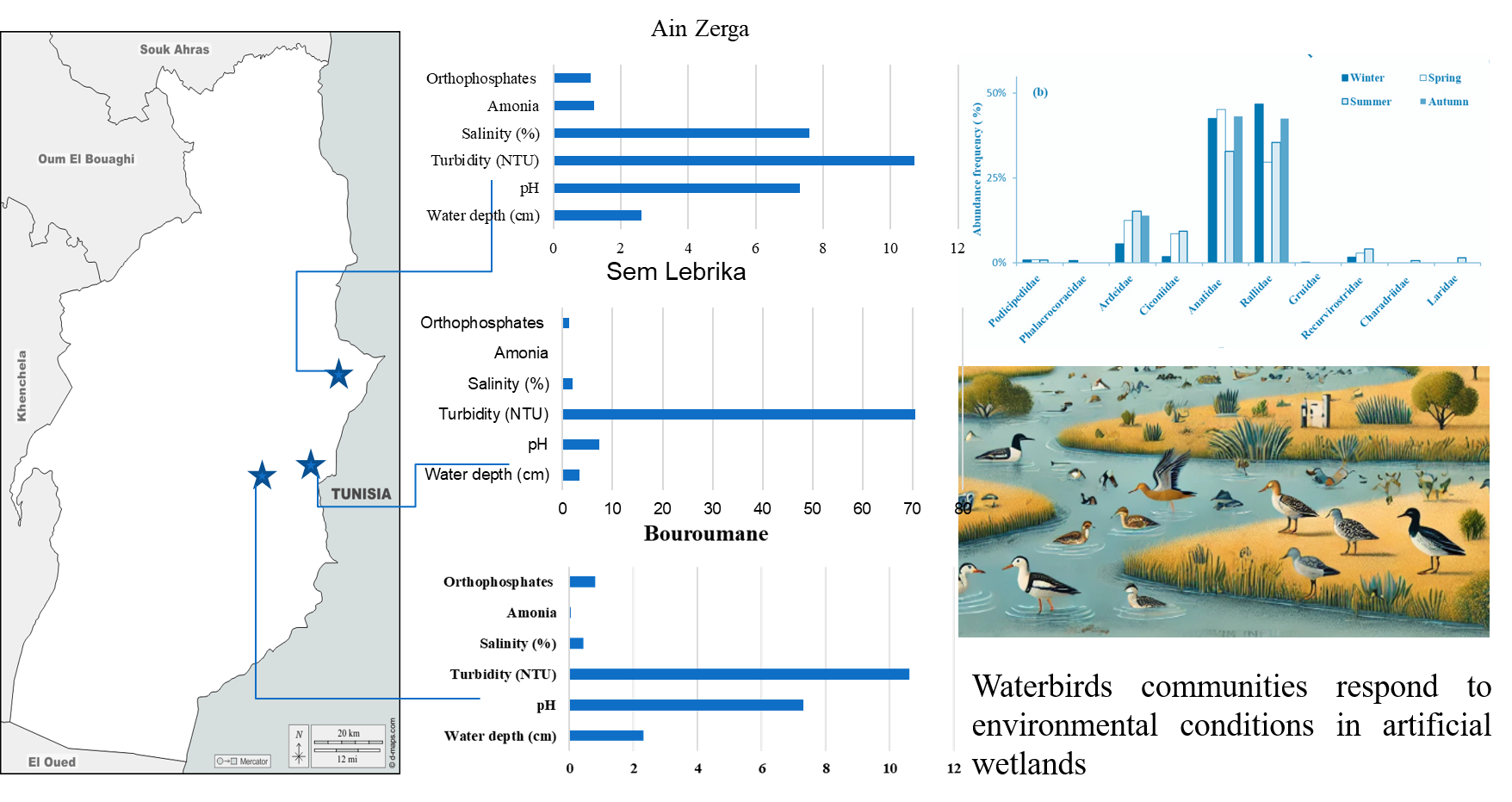
Our study aims to assess the interactions between environmental variables and waterbirds population dynamics across three artificial wetlands in a semi-arid region (northeastern Algeria). Conducted over two annual cycles (January 2018 to February 2020), the study involved monthly measurement of precipitation, water depth, air and water temperature, 5 physicochemical parameters of water and waterbirds census. Across the surveyed wetlands, we recorded 28 waterbird species belonging to 10 families and 7 orders. Anatidae was the best represented family with 11 species. According to the IUCN Red List, Aythya nyroca is considered near threatened; Aythya ferina is vulnerable, and Oxyura leucocephala is endangered. Nine species are protected by the Algerian law. The phenological status, showed that wintering species were the most represented (42.85%). The trophic status was dominated by polyphagous species (53.57%). The linear mixed model (LMM) analysis indicated that water depth, salinity, turbidity, ammonia, and orthophosphate exhibited significant differences across the three study sites, whereas pH did not display any significant variation. However, the variables that are significantly different between climatic seasons were water depth, air temperature and phosphate. The variables with no significant differences between climatic seasons were pH, salinity, turbidity, and ammonia. The canonical correspondence analysis (CCA) revealed that air temperature and precipitation were key factors influencing waterbird distribution across seasons.
Total file downloads: 29